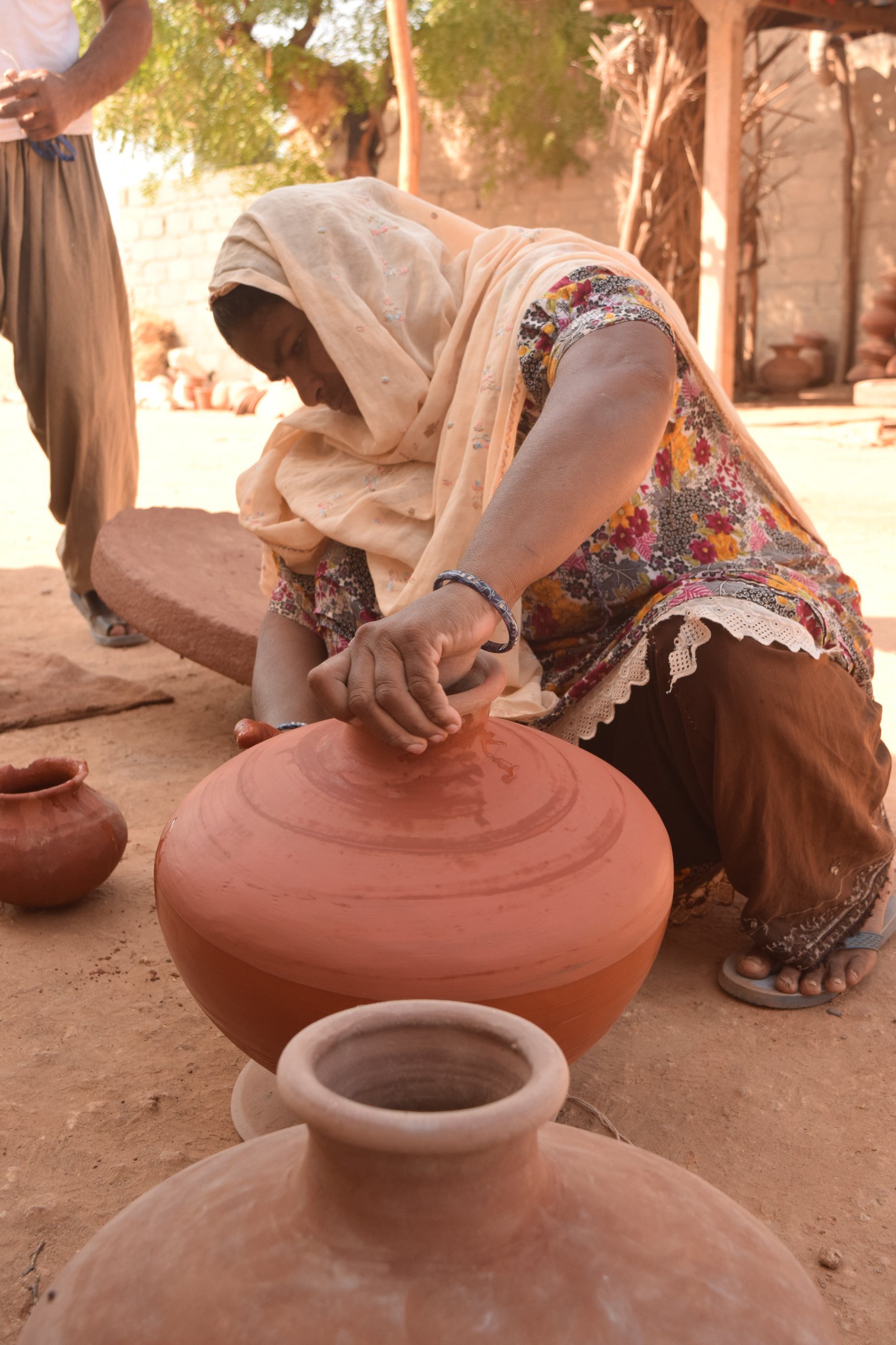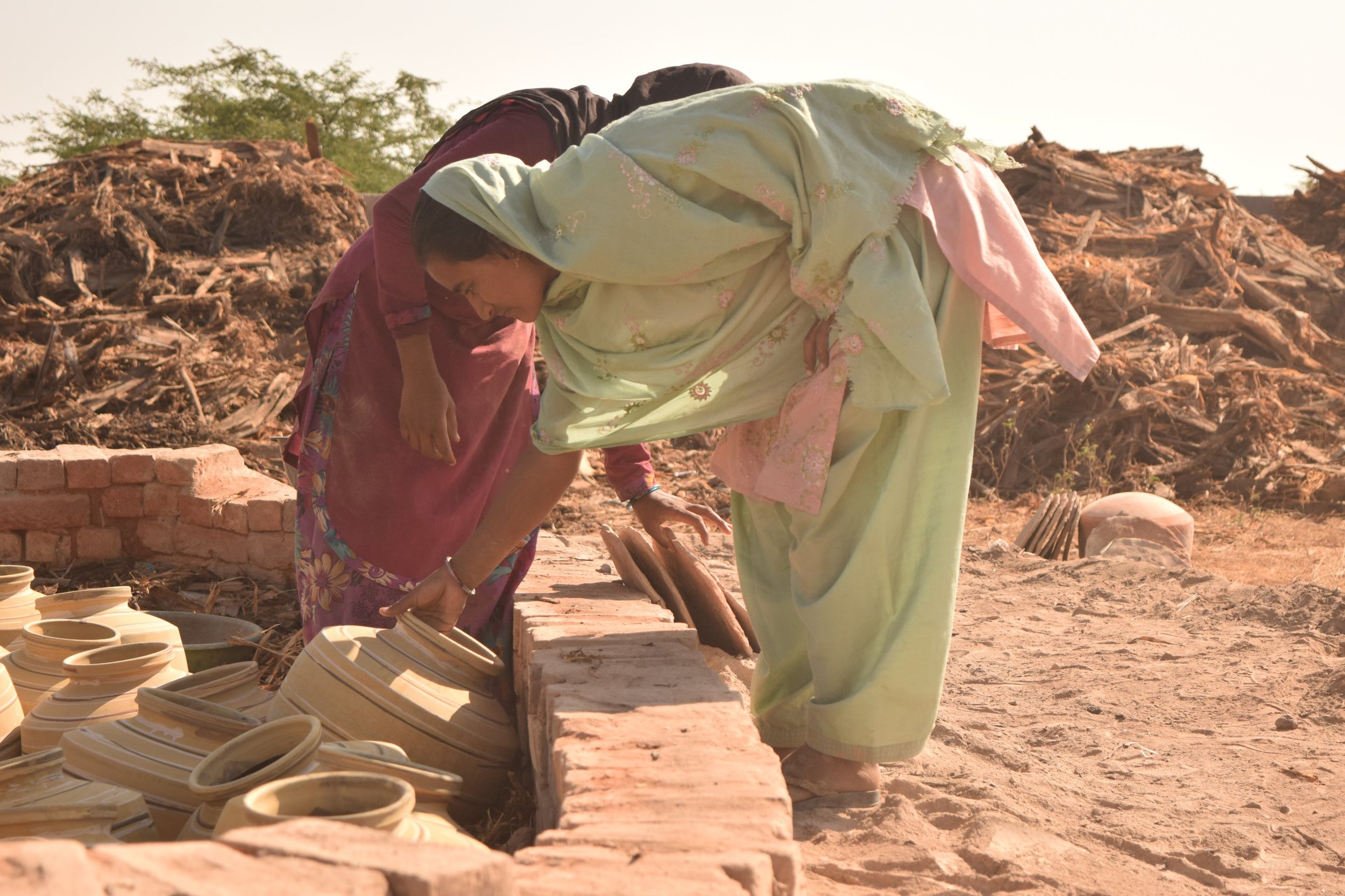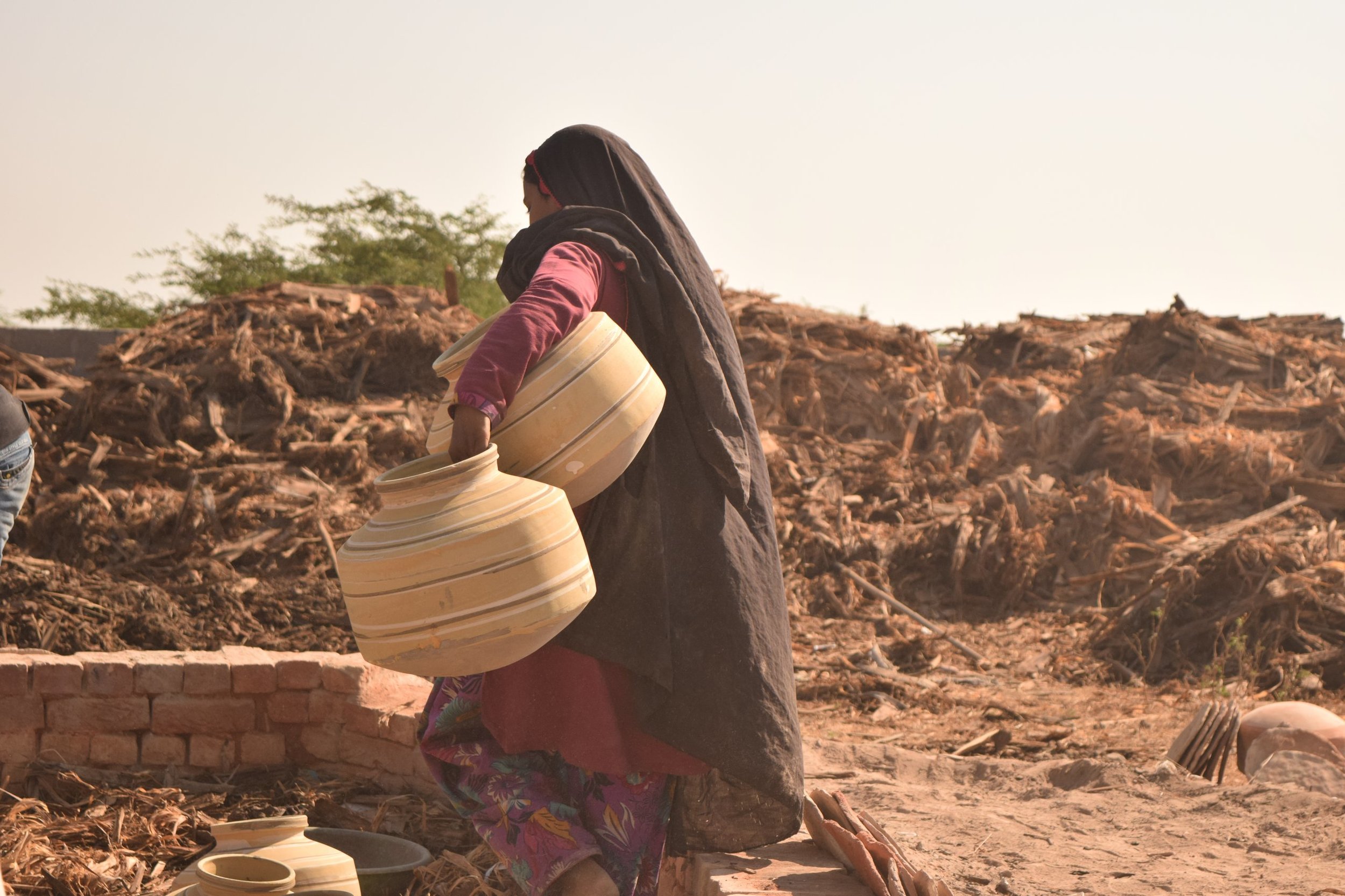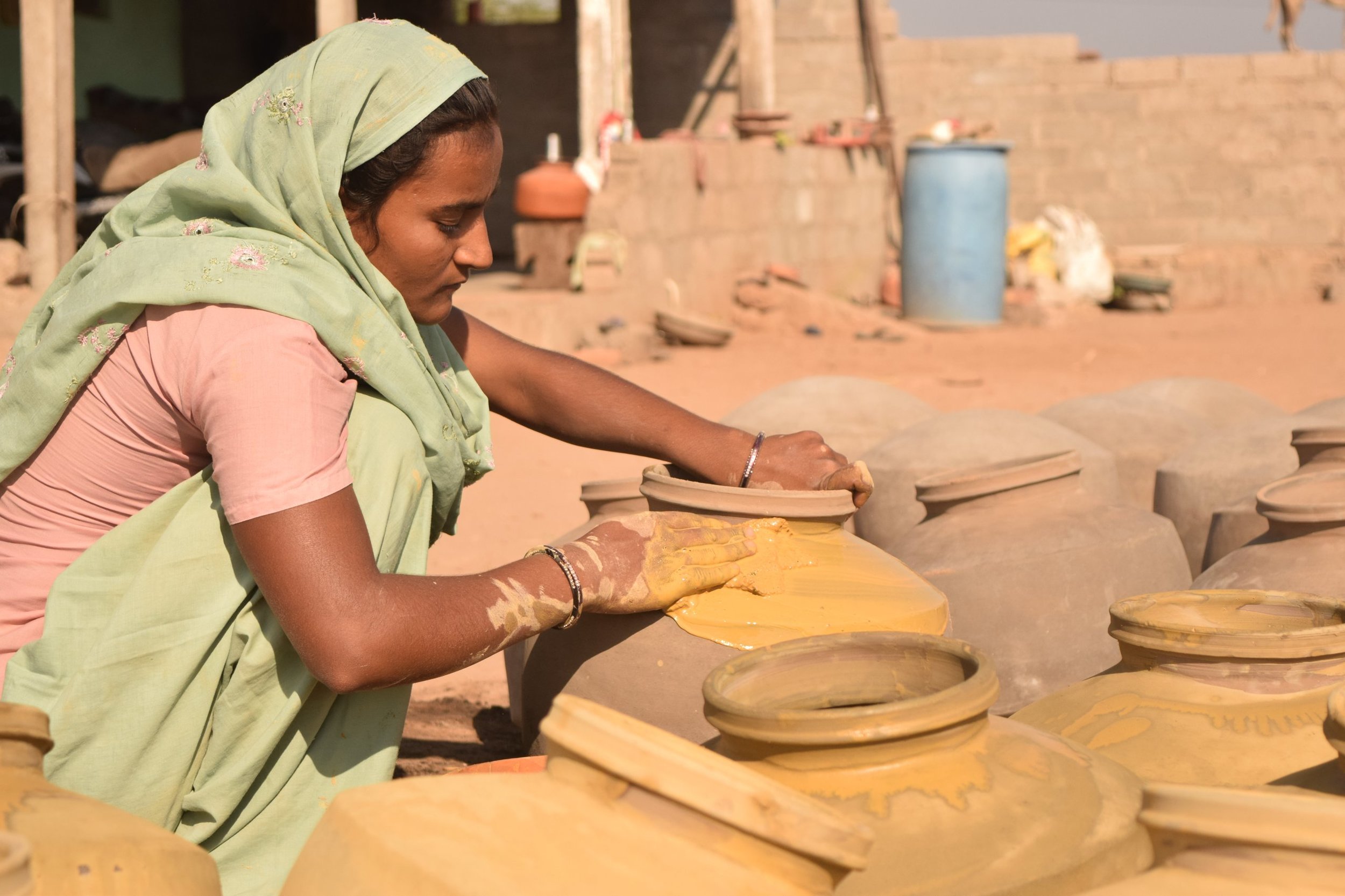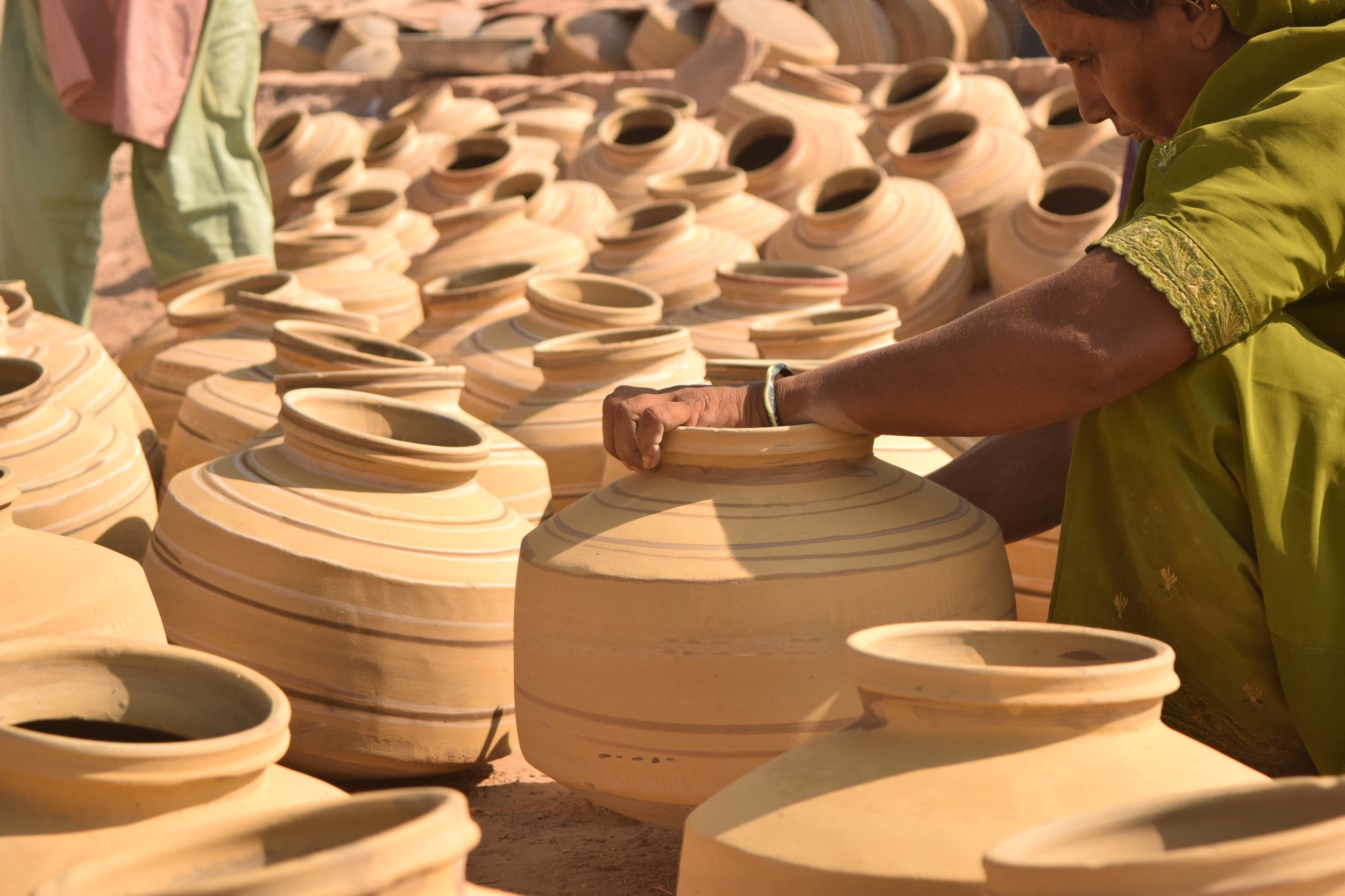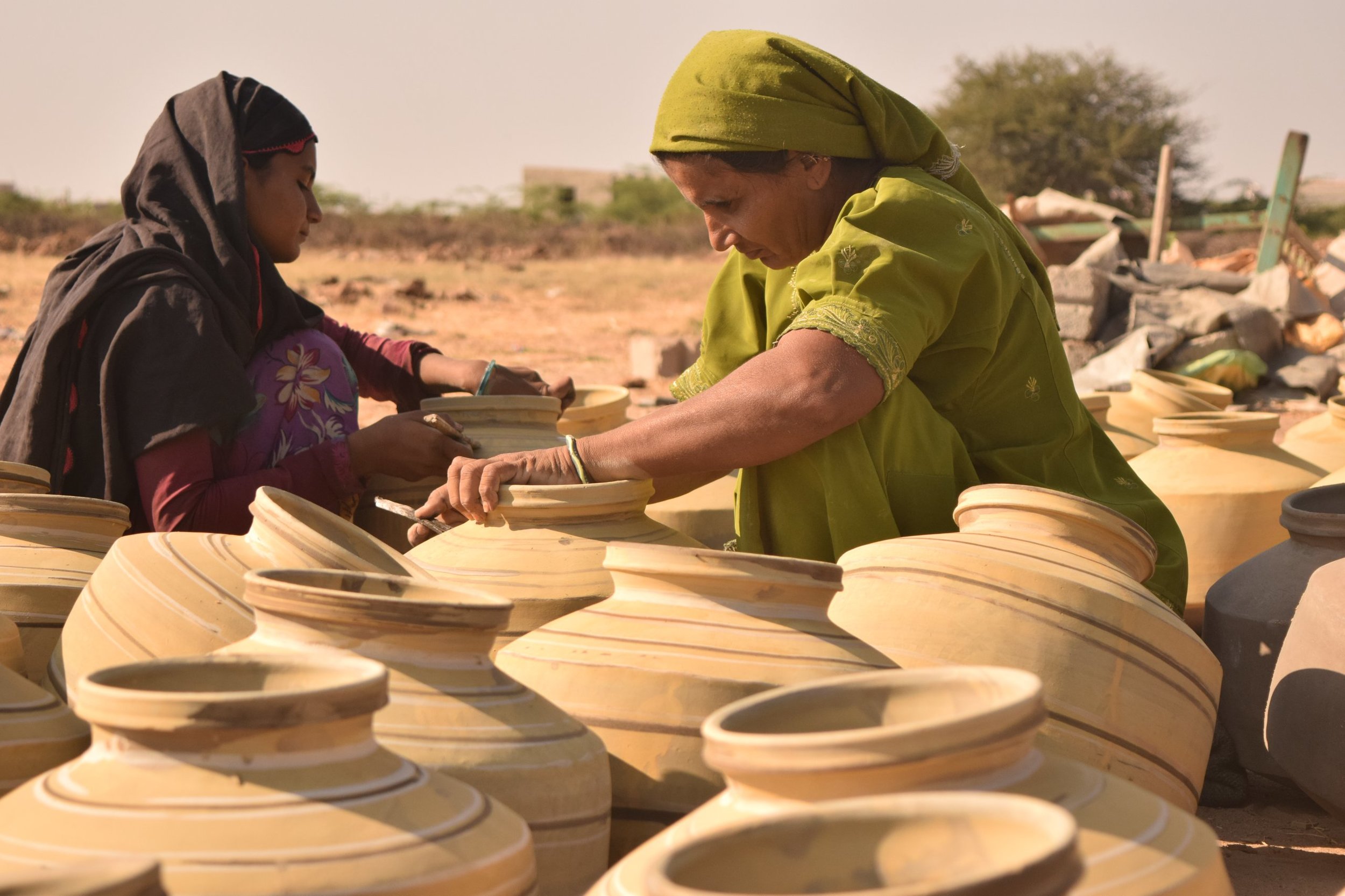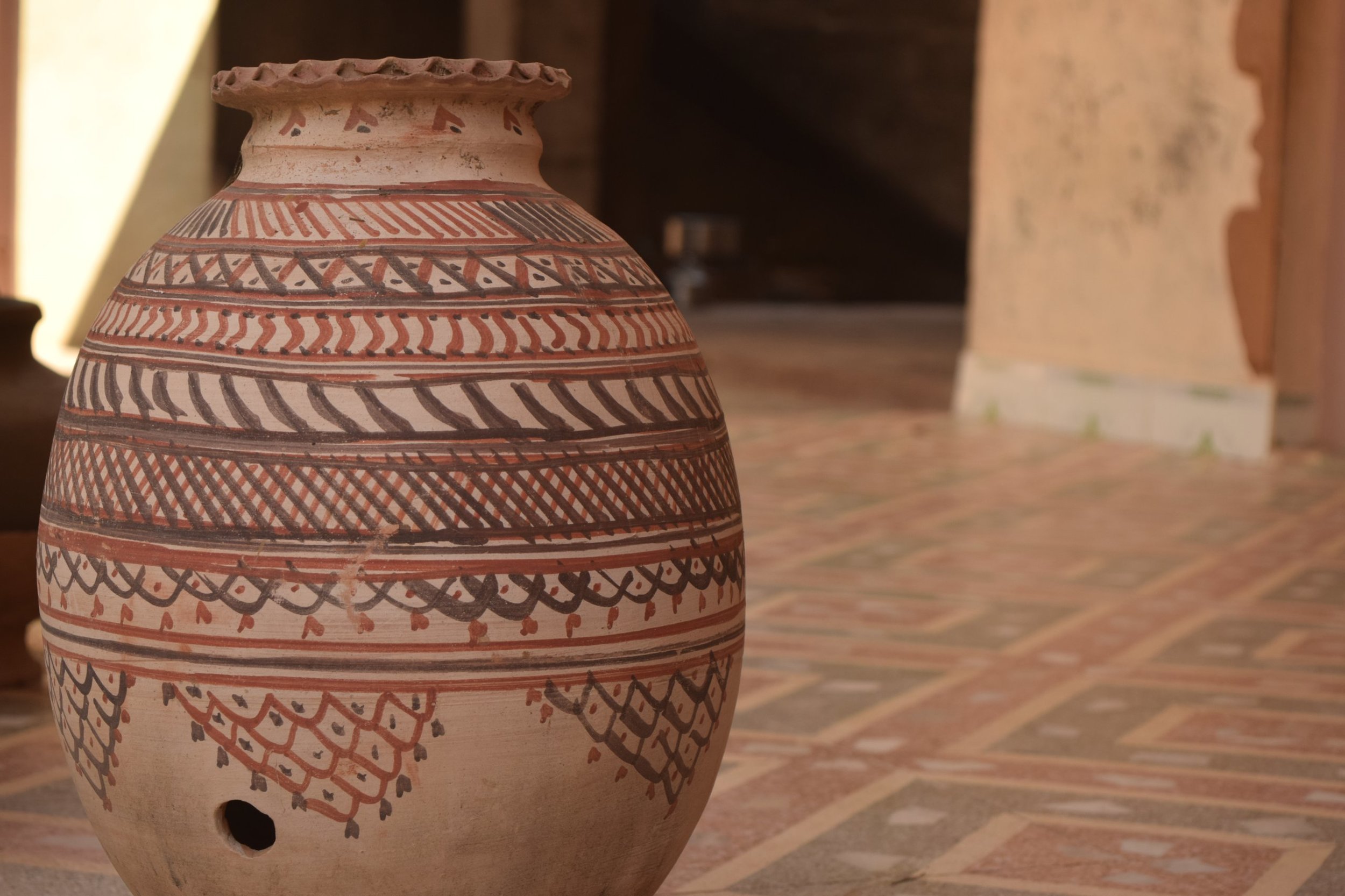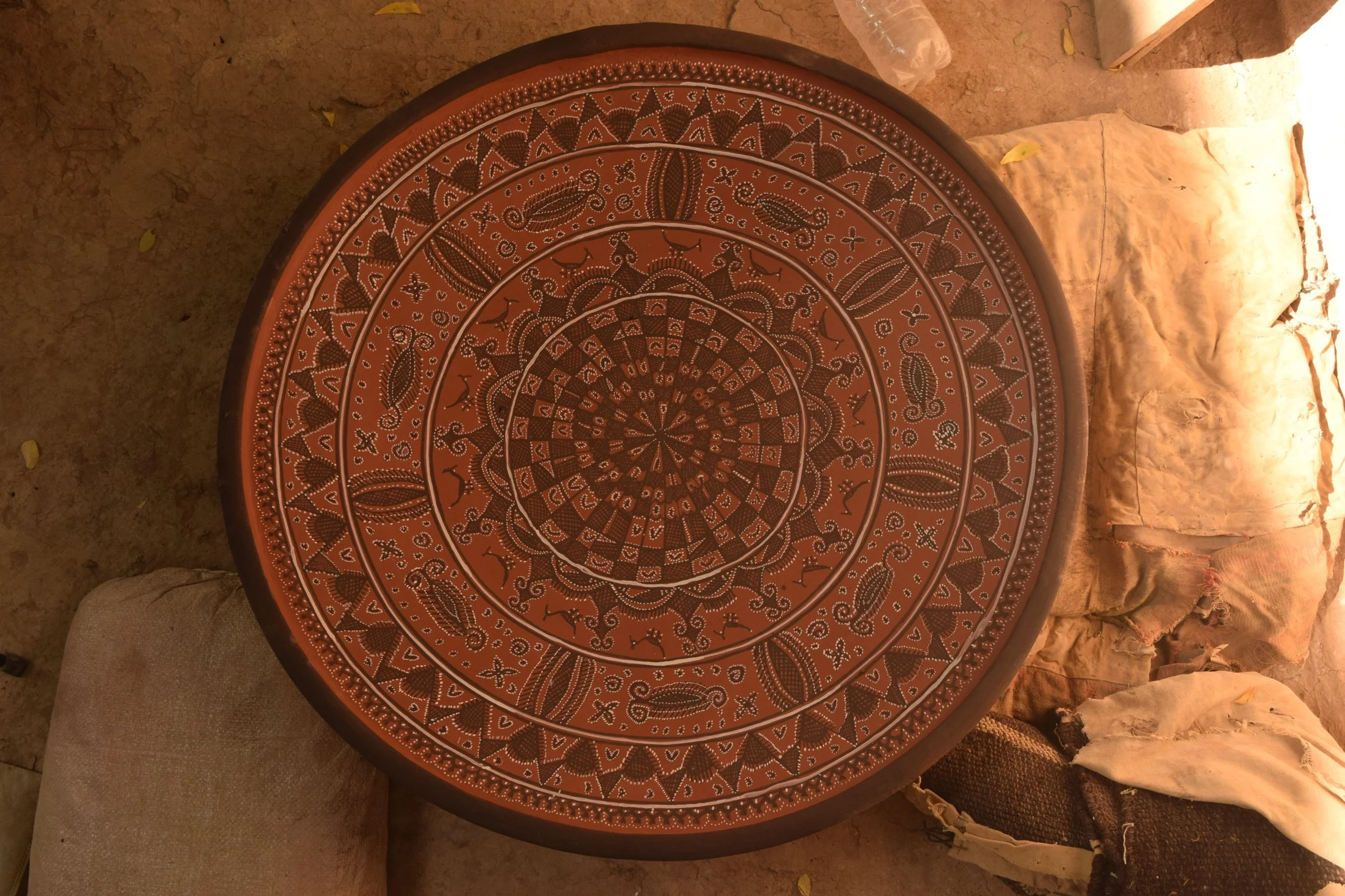
Lodai
There are approximately 35 odd Kumbhar families living in Lodai. While 15 families still practice the craft, only 4 are involved in the fine skilled painting also seen at Khavda. This exchange and similarity in painting styles has been possible due to the familial ties between the 2 villages maintained by the women. Like Khavda, these 4 families are linked to the tourist and retail markets through craft bazaars. The rest of the families supply to the local market and make mostly pots (ghadas) and pans (tavdis). There is a subtle difference in the motifs and painting style of Khavda and Lodai. The Lodai motifs are linked to the ones favored by the Rabari (pastoralist) and the Ahir (farmer) communities who were the earlier patrons of the Lodai Kumbhars. Interestingly, the potters in Lodai stock the pots from the Tuna potters for selling locally and to traders as these are in great demand due to their cooling properties.
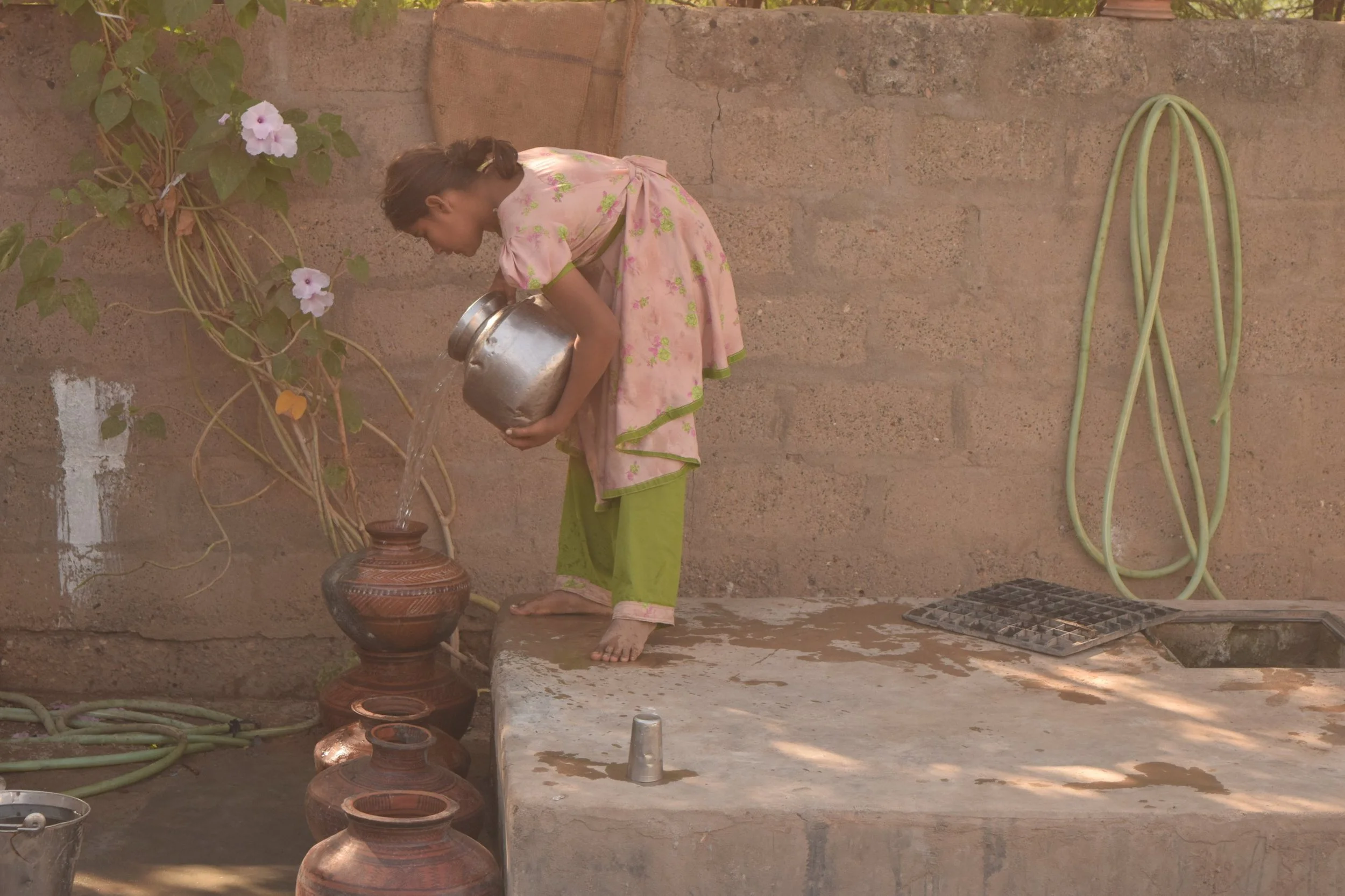
Khavda
The Kumbhars of Khavda say they moved here about 60 years ago from Sumrasar. Before that, they were in Budharmora towards Bhachau. They moved to better service their clients in Khavda. Their clients were the local pastoral communities who preferred simple, folk motifs with a free flow. While there are approximately 30 families who live here, very few of them practice pottery now. Only 3 families have been able to sustain the craft due to the increasing tourist market and with the help various exhibitions. The painting has become extremely stylized as a result, with the signature white dot highlights taken to a new level of embellishment. This along with a similar pottery style from Lodai village has become the face of Kachchh pottery today.
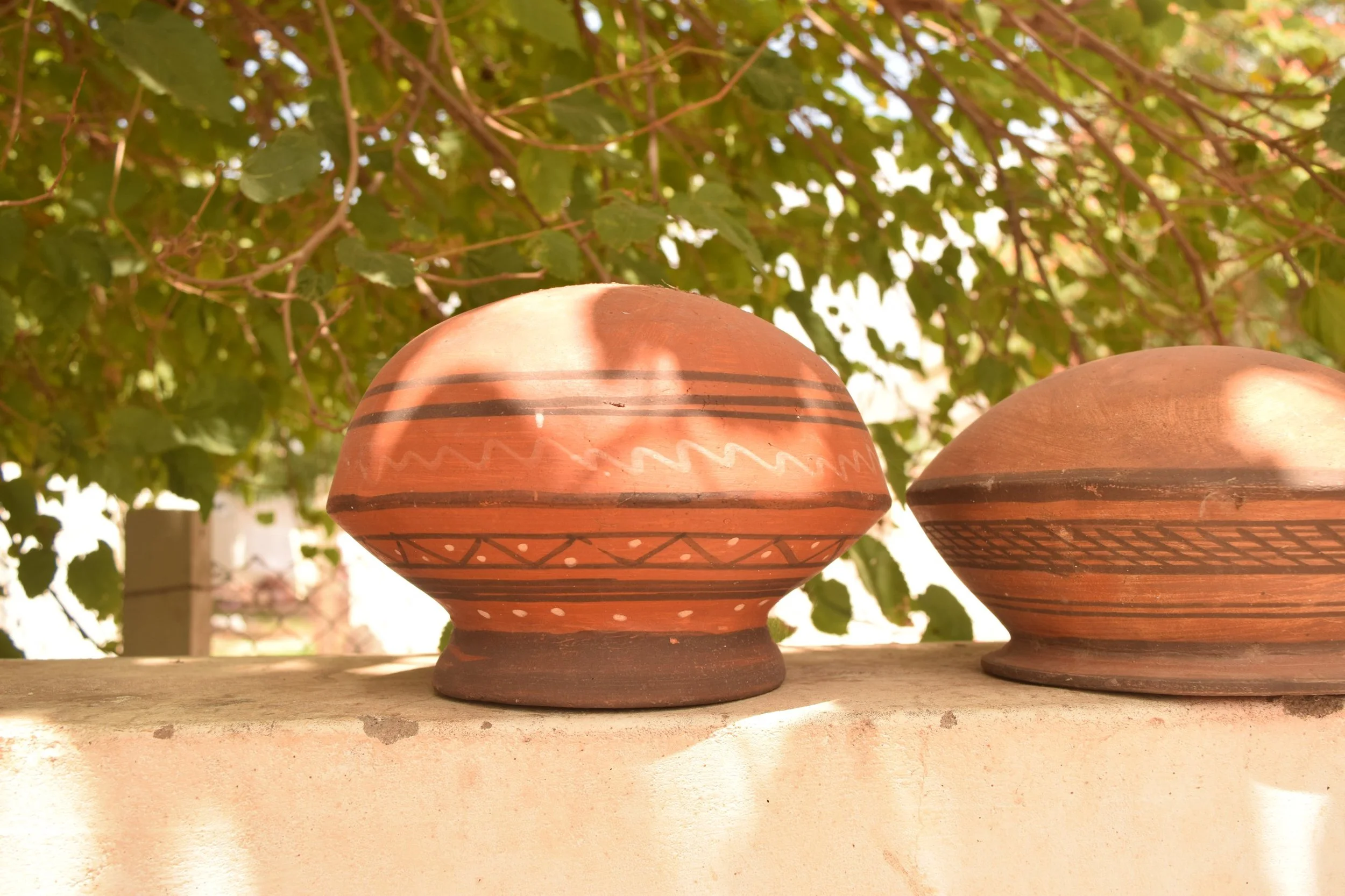
Bhuj
Bhuj has the highest concentration of Kumbhars, almost 1500 families. Historically, this may have been due to the patronage of the Royal family. The land reserved by the Royal family for the Kumbhars is now either lying vacant, sold off or encroached upon by other communities. The Kumbhar families are concentrated around Bhid Naka, Sarpet Naka , Sadar Camp, Aman Nagar, Khorai and Sanjyot Nagar. The Akhada falia had families making bricks, tiles and terracotta building crafts at one time but these crafts are almost finished. In all of Bhuj, there are now only 30 families working as potters. They are linked with the local market and to local traders who buy in bulk. They make money banks, planters, festival pots and lamps, sweet (firni) cups, etc. These products usually go out of Kachchh, packed in truck loads.
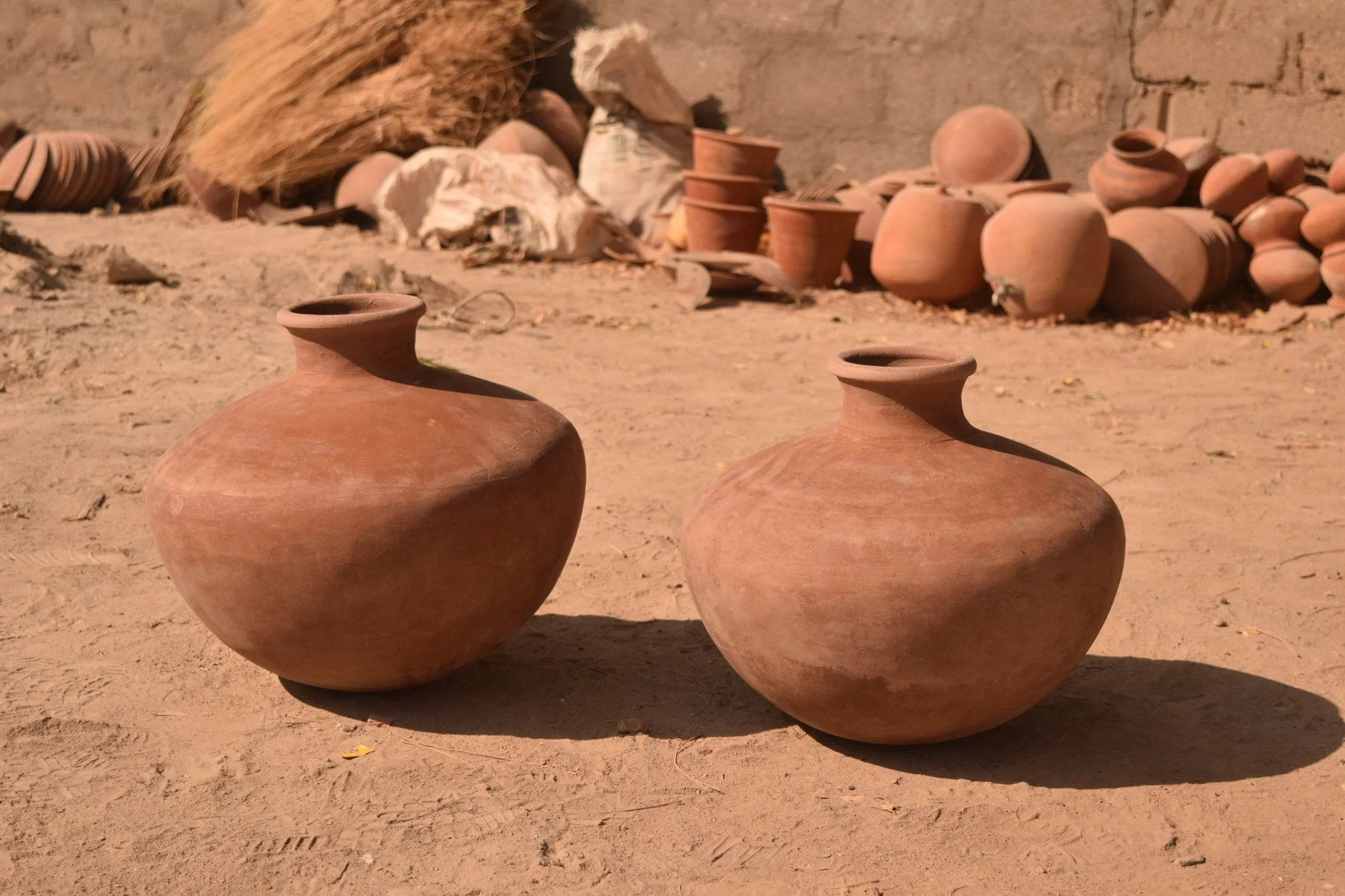
Ratadia
The 40 Kumbhar households of this village are the descendents of one family. Of these, about 12 families are engaged in making pottery. Like the other potters, they are from somewhere else, from Gagodar in the eastern part of Kachchh. An enterprising Kumbhar, Adambhai got a hand press machine with a die mould for mould pressing the traditional tavdi shape. Ratadia produces about 500 tavdis daily and they sell large quantities to traders, many of them in Gundiyali village.
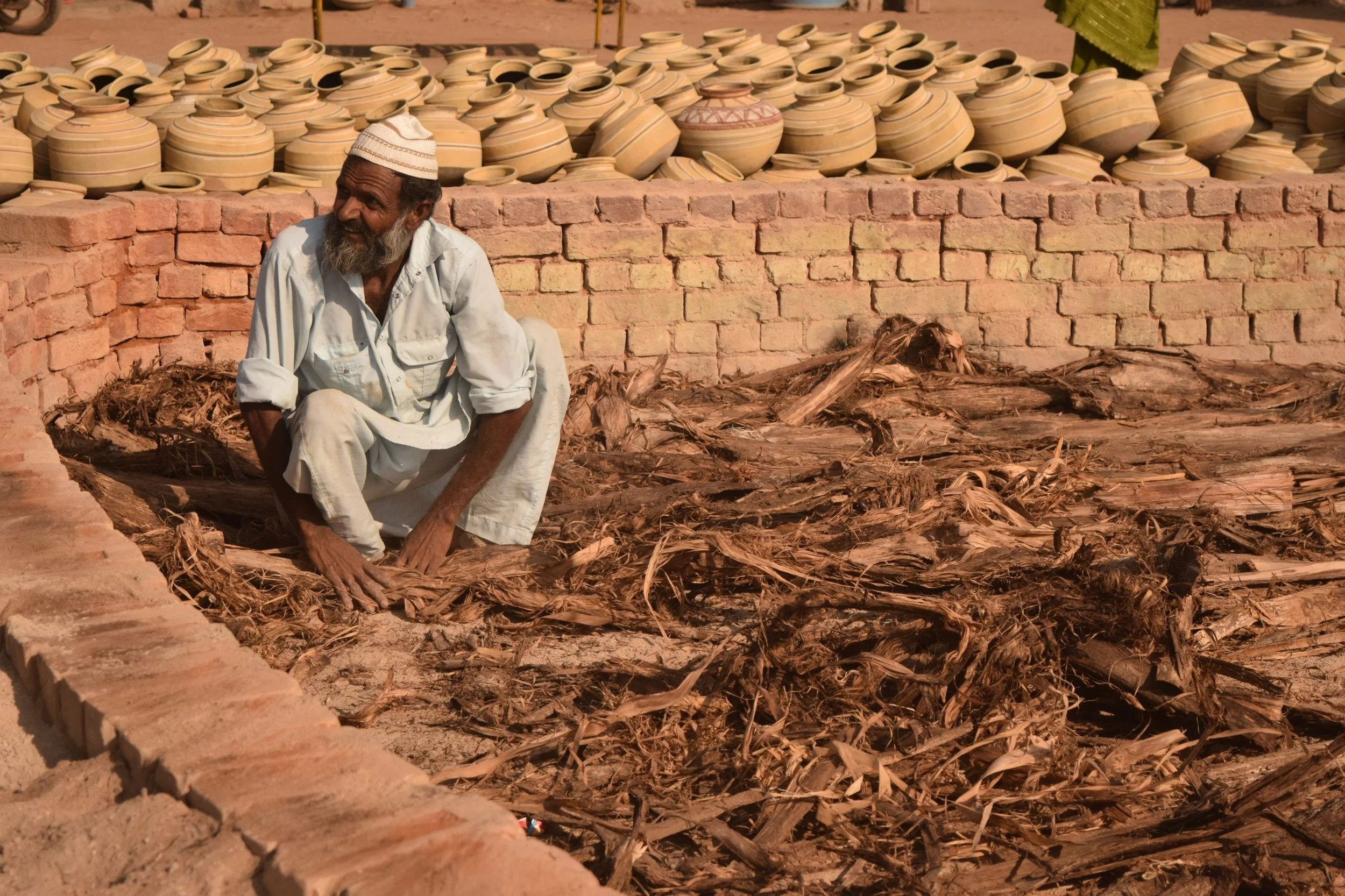
Tuna
Situated near the seashore, the pots of Tuna are very well known and much in demand. They have a unique property of keeping the water very cool and are a brand by themselves. This ability of the pots could be due to the quality of the clay they use which is extracted from a section of the sea bed when the waters recede. The process of collecting this clay is a tedious one which is possible due to the combined efforts of the entire community. There are 40 families who make only pots in 2 sizes. A typical Tuna pot has a slightly flattened base and a base color of gray.

Anjar
After Bhuj, Anjar has the highest concentration of Kumbhar families, approximately 400 households. As always, the Kumbhars of Anjar have come from somewhere else, from the villages of Jawaharnagar, Sanghad, Mathak, Chandrana, Kumbharia, Valadia, Khedoi, Bandera…but only 10 families are still active in the craft, making the familiar tavdi, matla, lamps and tiny gold painted toys. Making the small toys is a special mastery developed by the Potters in this cluster. These toys sell robustly in the local market and traders take them to temple towns like Chotila as well as metro cities like Baroda and Surat.

Gundiyali
This village is close to the Mandvi seashore. There was a time when a robust trade of pots took place from Gundiyali to the African coast. There are over 100 households of Kumbhar families living here with about 35 families still practicing the craft. The Kumbhars here have migrated from the villages of Bhadreshwar, Desalpur, and Mundra. Products of everyday use such as phirni cups, pots, planters, decorative hangings, lamps, etc are produced here in huge quantities. The potters here are linked with wholesale traders and remain busy for most of the year. With industrialization in Kachchh, the clay source of the potters near Gundiyali had come under threat. The Kumbhars were successful in negotiating their right to the clay source which was later reserved for their use by the Panchayat. A welfare organization called Manav Jyot from Kachchh has been supporting the potters in the region with large orders every year for bird baths and bird houses.







